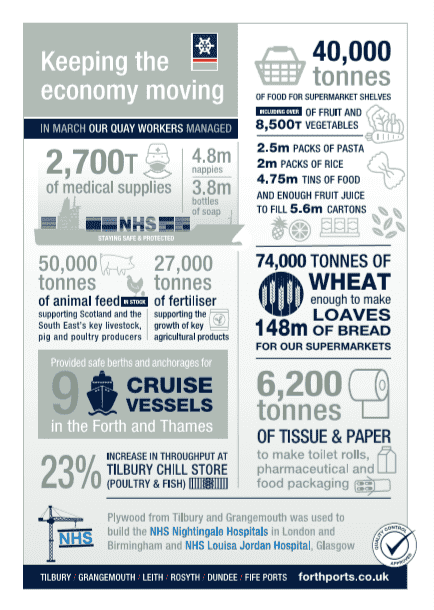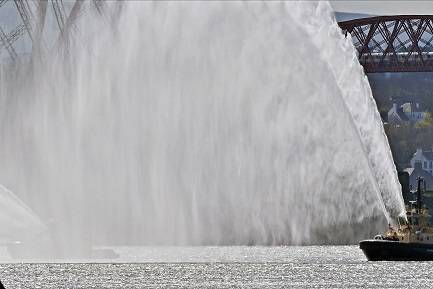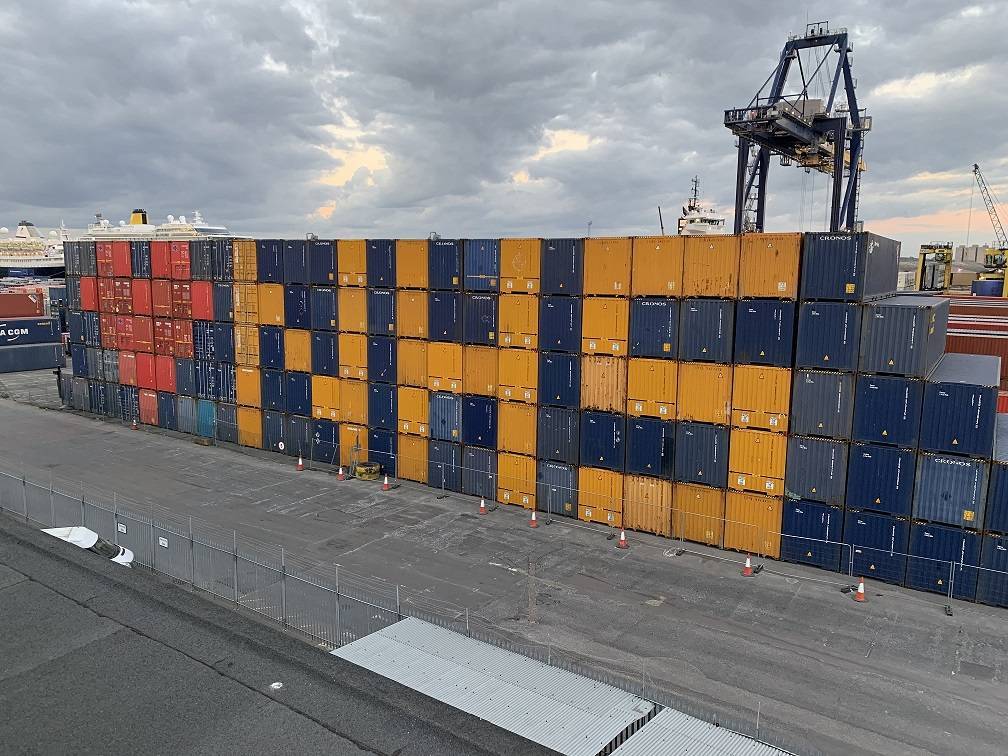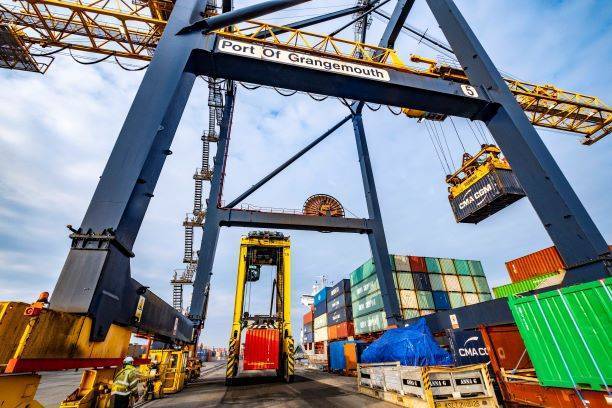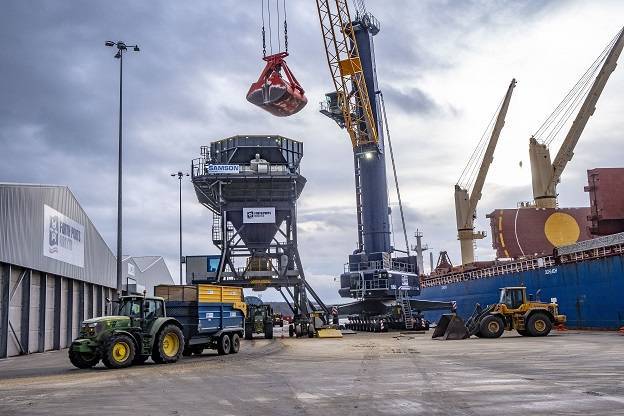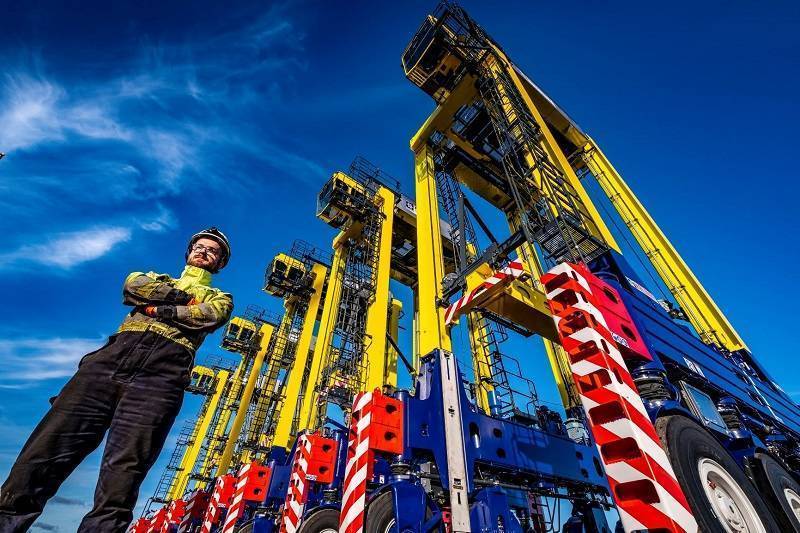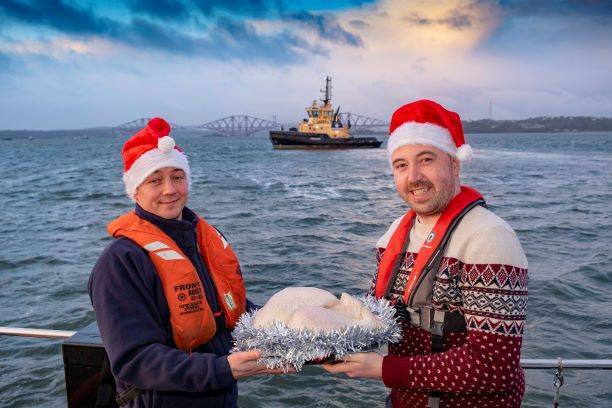Forth Ports Plays a Quay Role in Keeping the Economy Moving
Wednesday 22nd April 2020
Since the lockdown in March, ports have not stopped working. All of our ports are open and our quay workers around the UK have been working hard during these challenging times to make sure that food and goods arriving into their ports are getting to where they are most needed.
In March alone, the Group, which operates eight ports across the UK including Tilbury, Grangemouth, Leith, Rosyth and Dundee has managed:
- 74,000T of wheat – the equivalent of 148 million loaves of bread for our supermarkets
- 40,000 tonnes of food for supermarket shelves, including over 8,500T of fruit and vegetables and the equivalent of 2.5m packs of pasta, 2m packs of rice, 4.75m tins of food and enough fruit juice to fill 5.6m cartons
- 2700T of medical supplies, 4.8m nappies and 3.8m bottles of soap
- 6,200T of tissue and paper products to make toilet rolls, pharmaceutical packaging and food packaging
- 27,000T of fertiliser into the east coast of Scotland to support the growth of key agricultural products
- 10,000T of fishmeal this year which is crucial to the supply of Scotland’s aquaculture industry
- Over 50,000T of animal feed in stock, supporting Scotland and the South East’s key livestock, pig and poultry producers.
- Providing safe anchorages and berths for 9 cruise vessels in the River Forth and the River Thames
- Handled the plywood used to build the NHS Nightingale Hospitals in London and Birmingham and the NHS Louisa Jordan in Glasgow
Commenting on the infographic, Charles Hammond, Chief Executive of Forth Ports said: “I am extremely proud and grateful to our hard-working teams across our ports. Our own ‘quay’ workers have adapted admirably to the necessary changes and restrictions in order for us ensure we work in a safe and protected environment. All of this enables us to handle the much-needed products for other front-line essential services, people and business across the UK. It is clear to see from this infographic the key role that our ports are playing in these very challenging times to keep the supermarket shelves full and the economy moving.”
22 April 2020 – ends –

